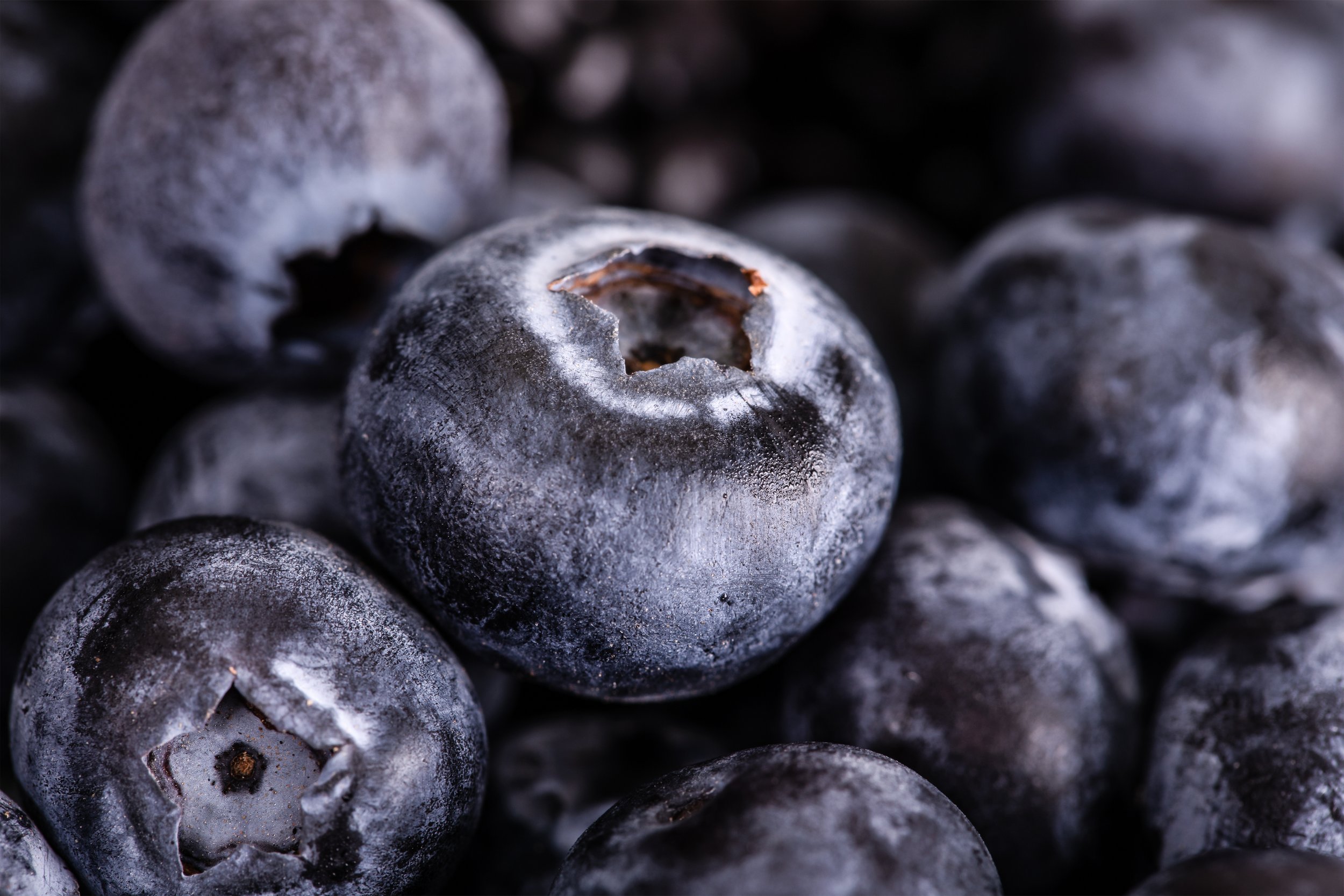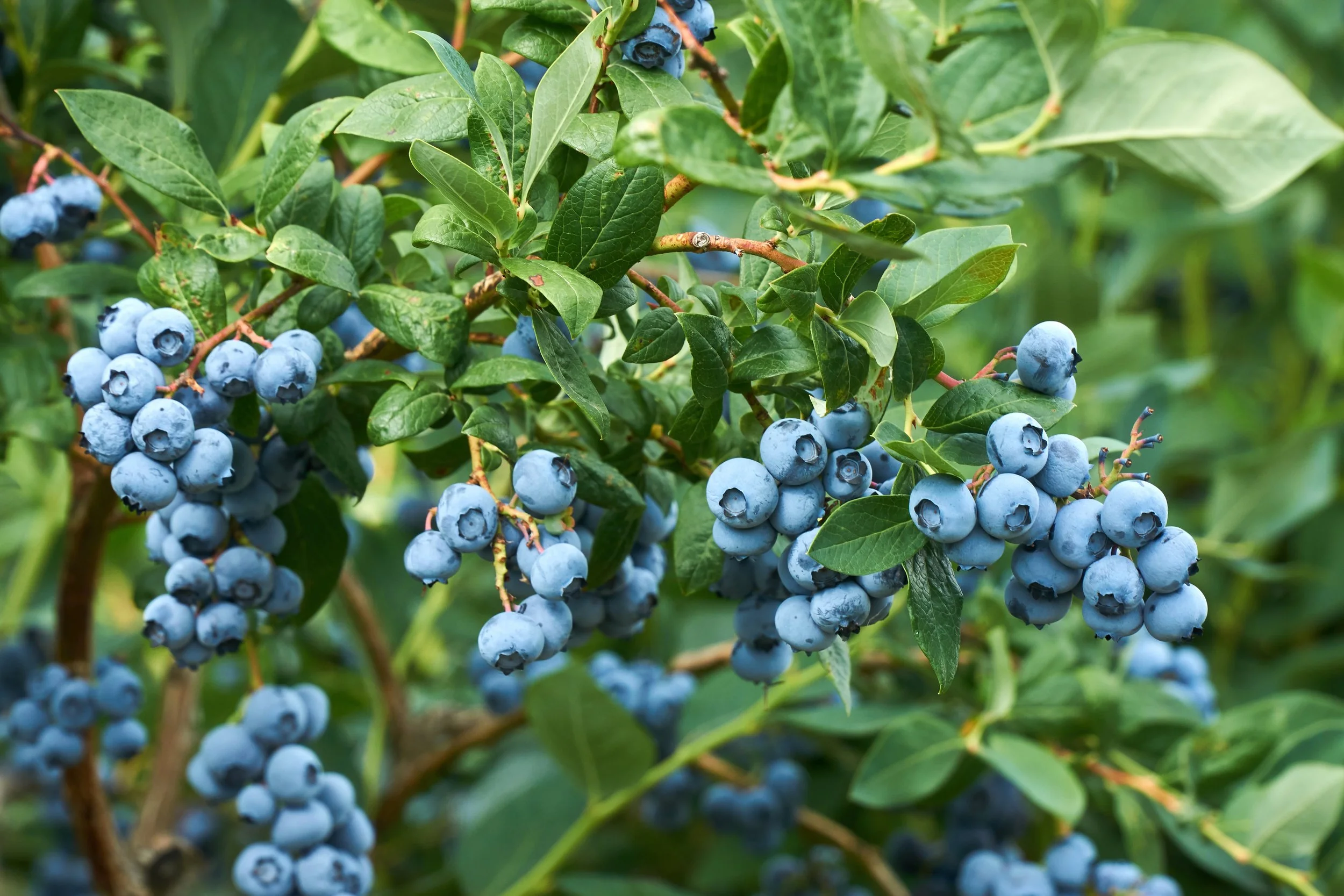
Blueberry Seed Oil
Cold pressed from Vaccinium corymbosum most commonly
Therapeutics
antiantherosclerotic (prevent buildup in arteries when ingested), anti-inflammatory, antioxidant, emollient
Plant Anatomy & Growth
The blueberry plant is a woody perennial bush with stems shooting out of the base of the plant also known as the crown. Here they all join into a fairly shallow root system. They take up to 8 years to fully mature and produce fruit, but once they do their flower buds develop into the fruit we all know well!
Native to North America these bushes thrive in the Pacific Northwest and other similar climates. Within the last 100,000 years the blueberry has been bred to produce the fruit known today and only popularized in the last 100 years.
Color
the oil is green with a bluish tint, this color will change depending on when the seeds were harvested
Scent
fruity, nutty, fragrant
Taste
nutty, fruity
Qualities
medium to fast absorbing leaving a mild scent that dissipates after a while
Constituents
The seeds contain roughly 10-15% oil after extraction. The oil contains fatty acids (35-38%) such as oleic (~18%), linoleic acid and linolenic acid. Some main sterols are campesterol and sitosterol and it also contains a small amount of tocopherols.
Uses
Apply the oil directly to the skin for immediate absorption. Additionally the oil may be consumed.
No known adverse effects.
References
Strik, B. (2015) How blueberry plants develop and grow. Oregon State University Extension Service.
https://extension.oregonstate.edu/crop-production/berries/how-blueberry-plants-develop-grow
Bada, J. C., León-Camacho, M., Copovi, P., & Alonso, L. (2013). Characterization of Berry and Currant Seed Oils from Asturias, Spain. International Journal of Food Properties, 17(1), 77–85. https://doi.org/10.1080/10942912.2011.614369
Bederska-Łojewska, D., Pieszka, M., Marzec, A., Rudzińska, M., Grygier, A., Siger, A., Cieślik-Boczula, K., Orczewska-Dudek, S., & Migdał, W. (2021). Physicochemical Properties, Fatty Acid Composition, Volatile Compounds of Blueberries, Cranberries, Raspberries, and Cuckooflower Seeds Obtained Using Sonication Method. Molecules (Basel, Switzerland), 26(24), 7446. https://doi.org/10.3390/molecules26247446
Pankau, R. (2019) The history of blueberries: From Native American staple to domesticated superfood. University of Illinois Extension. https://extension.illinois.edu/blogs/garden-scoop/2019-01-19-history-blueberries-native-american-staple-domesticated-superfood#:~:text=Blueberries%20are%20native%20to%20our,human%20inhabitants%20on%20our%20continent.


